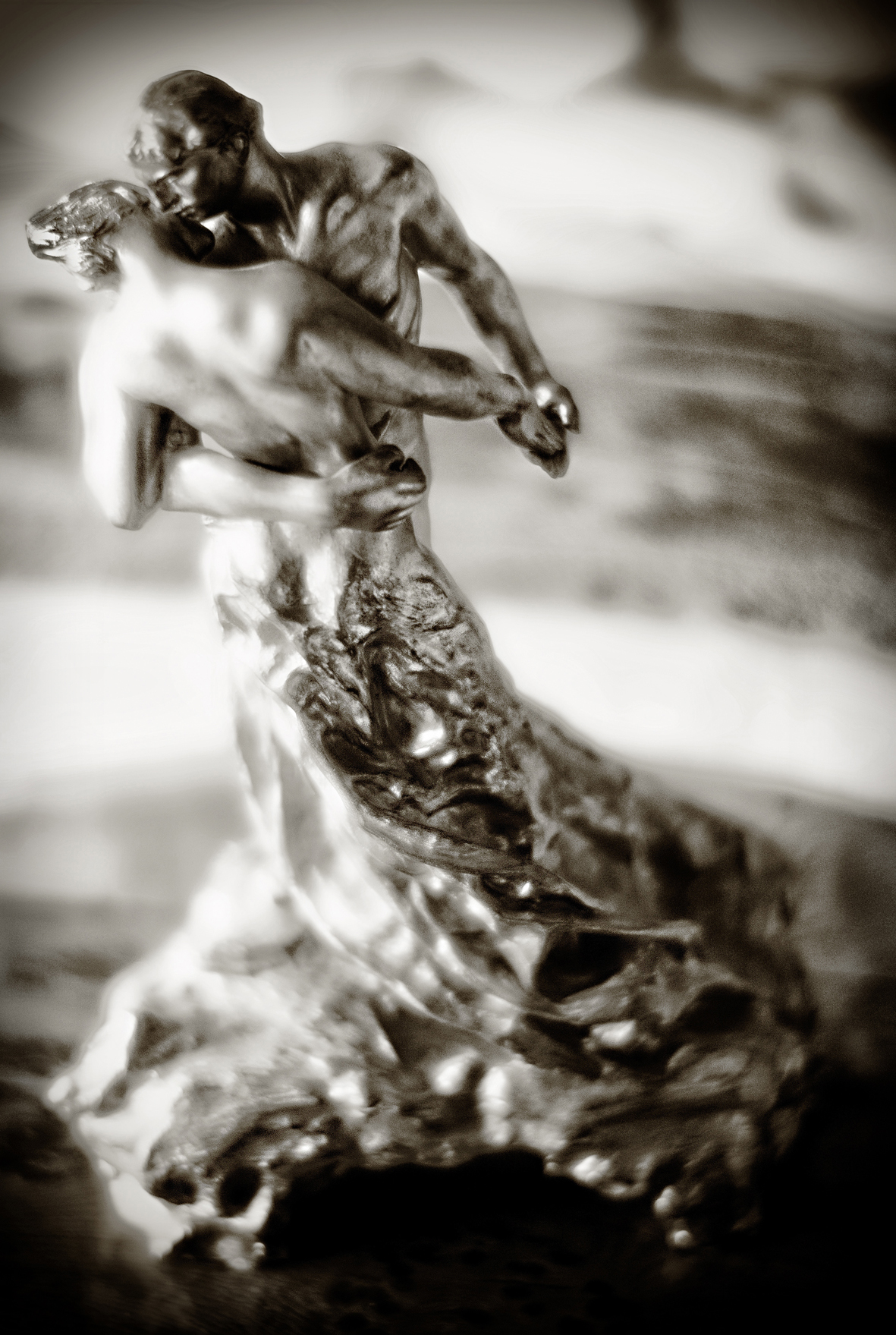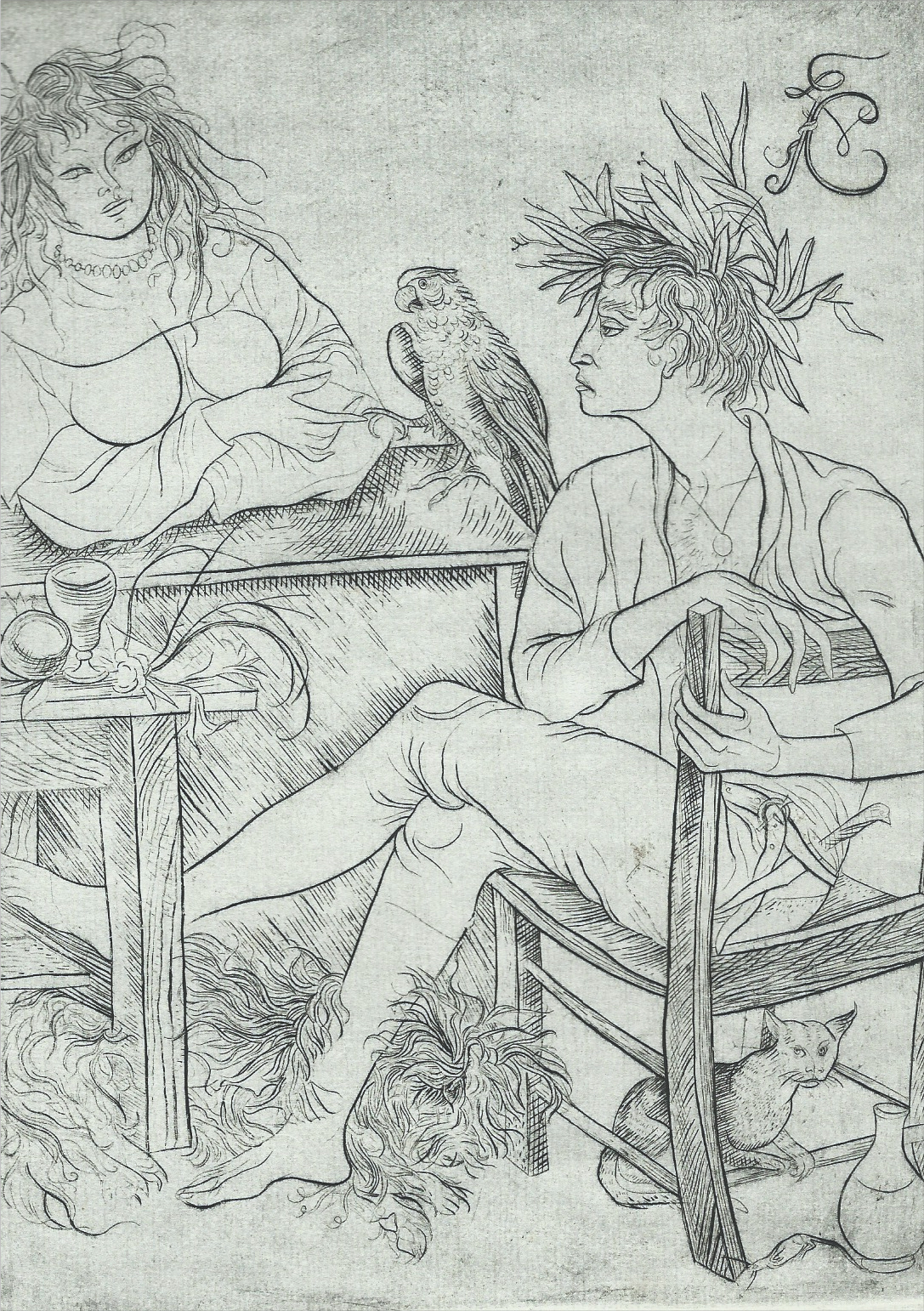|
En Blanc Et Noir
''En blanc et noir'' (; en, "In White and Black"), L. 134, CD. 142, is a suite in three movements for two pianos by Claude Debussy, written in June 1915. He composed the work on the Normandy coast, suffering from cancer and concerned about the involvement of France in the Great War. The work is full of personal literary and musical allusions. Each movement comes with a literary motto. In the second movement, Debussy quoted Luther's hymn "Ein feste Burg ist unser Gott" as a symbol of militant Lutheran Germany. The three movements were dedicated respectively to three people: Serge Koussevitzky, Jacques Charlot (an associate of Debussy's publisher who was killed in the war), and Igor Stravinsky. History Debussy composed ''En blanc et noir'' at his vacation residence on the Normandy coast between 4 and 20 June 1915. He was suffering from cancer. France had been at war since 3 August 1914, and emotions were heated against everything German. The work is a late fruit of his experie ... [...More Info...] [...Related Items...] OR: [Wikipedia] [Google] [Baidu] |
Suite (music)
A suite, in Western classical music and jazz, is an ordered set of instrumental or orchestral/concert band pieces. It originated in the late 14th century as a pairing of dance tunes and grew in scope to comprise up to five dances, sometimes with a prelude, by the early 17th century. The separate movements were often thematically and tonally linked. The term can also be used to refer to similar forms in other musical traditions, such as the Turkish fasıl and the Arab nuubaat. In the Baroque era, the suite was an important musical form, also known as ''Suite de danses'', ''Ordre'' (the term favored by François Couperin), '' Partita'', or ''Ouverture'' (after the theatrical "overture" which often included a series of dances) as with the orchestral suites of Christoph Graupner, Telemann and J.S. Bach. During the 18th century, the suite fell out of favour as a cyclical form, giving way to the symphony, sonata and concerto. It was revived in the later 19th century, but in a ... [...More Info...] [...Related Items...] OR: [Wikipedia] [Google] [Baidu] |
Suzanne Chaigneau
Suzanne Chaigneau (14 June 1875 – 13 April 1946) was a French violinist and chamber musician, and a noted violin teacher. She spent her childhood between Barbizon and Paris, receiving her musical education from her mother and family friends including Charles Lamoureux and Camille Chevillard. With her sisters she formed a piano trio which gave its first concert in Paris on 25 February 1895. She was the daughter of painter Ferdinand Chaigneau and Louise Deger, the twin sister of the cellist Marguerite and the sister of pianist Thérèse, with whom she played as the Trio Chaigneau. In 1910 she married the son of violinist Joseph Joachim, Hermann Joachim, an officer in the German army, and was the mother of the singer Irène Joachim. The Chaigneau home welcomed many artistic visitors and was also considered close to the Dreyfusard cause, with Georges Picquart among other visitors to the home. The Trio Chaigneau played in London and Edinburgh and, with assistance from Joachim, unde ... [...More Info...] [...Related Items...] OR: [Wikipedia] [Google] [Baidu] |
Michel Carré
Michel Carré (20 October 1821, Besançon – 27 June 1872, Argenteuil) was a prolific French librettist. He went to Paris in 1840 intending to become a painter but took up writing instead. He wrote verse and plays before turning to writing libretti. He wrote the text for Charles Gounod's '' Mireille'' (1864) on his own, and collaborated with Eugène Cormon on Bizet's ''Les pêcheurs de perles''. However, the majority of his libretti were completed in tandem with Jules Barbier, with whom he wrote the libretti for numerous operas, including Camille Saint-Saëns's '' Le timbre d'argent'' (libretto written in 1864, first performed in 1877), Gounod's ''Faust'' (1859), '' Roméo et Juliette'' (1867), and Offenbach's '' Les contes d'Hoffmann'' (1881). As with the other libretti by Barbier and himself, these were adaptations of existing literary masterworks. His son, Michel-Antoine (1865–1945), followed in his father's footsteps, also writing libretti, and later directing silent fi ... [...More Info...] [...Related Items...] OR: [Wikipedia] [Google] [Baidu] |
Jules Barbier
Paul Jules Barbier (8 March 182516 January 1901) was a French poet, writer and opera librettist who often wrote in collaboration with Michel Carré. He was a noted Parisian bon vivant and man of letters. Works His libretti for extant operas (those co-written with Carré are shown with an asterisk) include: *: **''La Colombe'', '''' (*), '' |
Time
Time is the continued sequence of existence and events that occurs in an apparently irreversible succession from the past, through the present, into the future. It is a component quantity of various measurements used to sequence events, to compare the duration of events or the intervals between them, and to quantify rates of change of quantities in material reality or in the conscious experience. Time is often referred to as a fourth dimension, along with three spatial dimensions. Time has long been an important subject of study in religion, philosophy, and science, but defining it in a manner applicable to all fields without circularity has consistently eluded scholars. Nevertheless, diverse fields such as business, industry, sports, the sciences, and the performing arts all incorporate some notion of time into their respective measuring systems. 108 pages. Time in physics is operationally defined as "what a clock reads". The physical nature of time is a ... [...More Info...] [...Related Items...] OR: [Wikipedia] [Google] [Baidu] |
C Major
C major (or the key of C) is a major scale based on C, consisting of the pitches C, D, E, F, G, A, and B. C major is one of the most common keys used in music. Its key signature has no flats or sharps. Its relative minor is A minor and its parallel minor is C minor. The C major scale is: : On the piano, the C major scale can be played by playing only the white keys starting on C. Compositions Twenty of Joseph Haydn's 106 symphonies are in C major, making it his second most-used key, second to D major. Of the 134 symphonies mistakenly attributed to Haydn that H. C. Robbins Landon lists in his catalog, 33 are in C major, more than any other key. Before the invention of the valves, Haydn did not write trumpet and timpani parts in his symphonies, except those in C major. Landon writes that it wasn't "until 1774 that Haydn uses trumpets and timpani in a key other than C major... and then only sparingly." Most of Haydn's symphonies in C major are labelled "festive ... [...More Info...] [...Related Items...] OR: [Wikipedia] [Google] [Baidu] |
Waltz
The waltz ( ), meaning "to roll or revolve") is a ballroom and folk dance, normally in triple ( time), performed primarily in closed position. History There are many references to a sliding or gliding dance that would evolve into the waltz that date from 16th-century Europe, including the representations of the printmaker Hans Sebald Beham. The French philosopher Michel de Montaigne wrote of a dance he saw in 1580 in Augsburg, where the dancers held each other so closely that their faces touched. Kunz Haas (of approximately the same period) wrote, "Now they are dancing the godless ''Weller'' or ''Spinner''."Nettl, Paul. "Birth of the Waltz." In ''Dance Index'' vol 5, no. 9. 1946 New York: Dance Index-Ballet Caravan, Inc. pages 208, 211 "The vigorous peasant dancer, following an instinctive knowledge of the weight of fall, uses his surplus energy to press all his strength into the proper beat of the bar, thus intensifying his personal enjoyment in dancing." Around 1750, ... [...More Info...] [...Related Items...] OR: [Wikipedia] [Google] [Baidu] |
Cubist
Cubism is an early-20th-century avant-garde art movement that revolutionized European painting and sculpture, and inspired related movements in music, literature and architecture. In Cubist artwork, objects are analyzed, broken up and reassembled in an abstracted form—instead of depicting objects from a single viewpoint, the artist depicts the subject from a multitude of viewpoints to represent the subject in a greater context. Cubism has been considered the most influential art movement of the 20th century. The term is broadly used in association with a wide variety of art produced in Paris (Montmartre and Montparnasse) or near Paris ( Puteaux) during the 1910s and throughout the 1920s. The movement was pioneered by Pablo Picasso and Georges Braque, and joined by Jean Metzinger, Albert Gleizes, Robert Delaunay, Henri Le Fauconnier, Juan Gris, and Fernand Léger. One primary influence that led to Cubism was the representation of three-dimensional form in the late works of Pau ... [...More Info...] [...Related Items...] OR: [Wikipedia] [Google] [Baidu] |
Institut De France
The (; ) is a French learned society, grouping five , including the Académie Française. It was established in 1795 at the direction of the National Convention. Located on the Quai de Conti in the 6th arrondissement of Paris, the institute manages approximately 1,000 foundations, as well as museums and châteaux open for visit. It also awards prizes and subsidies, which amounted to a total of over €27 million per year in 2017. Most of these prizes are awarded by the institute on the recommendation of the . History The building was originally constructed as the Collège des Quatre-Nations by Cardinal Mazarin, as a school for students from new provinces attached to France under Louis XIV. The inscription over the façade reads "JUL. MAZARIN S.R.E. CARD BASILICAM ET GYMNAS F.C.A M.D.C.LXI", attesting that Mazarin ordered its construction in 1661. The Institut de France was established on 25 October 1795, by the National Convention. On 1 January 2018, Xavier Darc ... [...More Info...] [...Related Items...] OR: [Wikipedia] [Google] [Baidu] |
Camille Saint-Saëns
Charles-Camille Saint-Saëns (; 9 October 183516 December 1921) was a French composer, organist, conductor and pianist of the Romantic era. His best-known works include Introduction and Rondo Capriccioso (1863), the Second Piano Concerto (1868), the First Cello Concerto (1872), ''Danse macabre'' (1874), the opera ''Samson and Delilah'' (1877), the Third Violin Concerto (1880), the Third ("Organ") Symphony (1886) and ''The Carnival of the Animals'' (1886). Saint-Saëns was a musical prodigy; he made his concert debut at the age of ten. After studying at the Paris Conservatoire he followed a conventional career as a church organist, first at Saint-Merri, Paris and, from 1858, La Madeleine, the official church of the French Empire. After leaving the post twenty years later, he was a successful freelance pianist and composer, in demand in Europe and the Americas. As a young man, Saint-Saëns was enthusiastic for the most modern music of the day, particularly that of Schum ... [...More Info...] [...Related Items...] OR: [Wikipedia] [Google] [Baidu] |
François Villon
François Villon ( Modern French: , ; – after 1463) is the best known French poet of the Late Middle Ages. He was involved in criminal behavior and had multiple encounters with law enforcement authorities. Villon wrote about some of these experiences in his poems. Biography Birth Villon was born in Paris in 1431. One source gives the date as .Charpier 1958, "1er avril 1431 (vieux style) ou 19 avril 1432 (nouveau style) : naissance à Paris, de ''François de Montcorbier'', alias ''des Loges'', qui deviendra François Villon pril 1, 1431 (old style) or April 19, 1432 (new style): birth in Paris of ''François de Montcorbier'', alias ''des Loges'', who would become François Villon Early life Villon's real name may have been François de Montcorbier or François des Loges: both of these names appear in official documents drawn up in Villon's lifetime. In his own work, however, Villon is the only name the poet used, and he mentions it frequently in his work. His ... [...More Info...] [...Related Items...] OR: [Wikipedia] [Google] [Baidu] |

.jpg)




